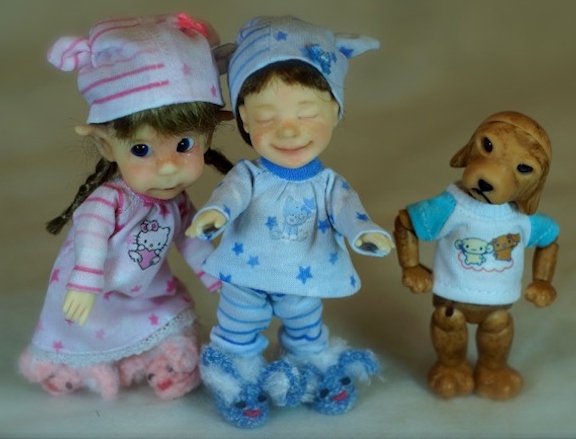
Peak’s Woods Sky, white skin. Wig by Michele Hardy
Thinking about entering the ball-jointed world? Don’t hesitate, and don’t be intimidated by the “fragility” of resin. If a klutz like me can collect resin BJDs, so can you! Whenever you enter a new hobby, it’s good to do some research–and ball-jointed dolls are a little different from fashion or antique dolls. I’ll start this series of posts on the terminology of ball-jointed dolls–and really, these are the bare bones basics from a beginning collector. You can learn from my mistakes!
Ball-jointed doll usually refers to any doll that is strung with elastic and “articulated with ball and socket joints,” according to Wikipedia. Many collectors have definite opinions as to what makes a “true” BJD–it must be cast in resin, for example, or it must have articulated elbows and knees. But for my purposes, I’ll use Wiki’s first line definition.
Resin is a polyurethane plastic. It’s very hard, but can be breakable when dropped.
Most BJDs come with interchangeable wigs and acrylic or glass eyes, which allows for easy customization. In addition, dolls are available as “basic” (nude or in basic underwear) or as a “full set,” which includes an outfit, wig and often face-up.
Face-up refers to the doll’s make-up, and this is often available at an extra charge. Most BJDs are available blank for the owners to paint themselves.
ABJDs stands for “Asian ball-jointed dolls,” and as I understand it, refers to the on-topic dolls at the forum Den of Angels.
American ball-jointed dolls include Goodreau Dolls, Berdine Creedy and Kim Lasher dolls. Apparently these dolls vary in their design aesthetic from ABJDs, but I haven’t been a collector long enough to discover the difference.





